第1章
My readers will naturally ask why I have delayed writing this book for six years after my return; and I feel bound to give them full satisfaction on this point.
When I reached England in the spring of 1862, I found myself surrounded by a room full of packing cases containing the collections that I had, from time to time, sent home for my private use. These comprised nearly three thousand birdskins of about one thousand species, at least twenty thousand beetles and butterflies of about seven thousand species, and some quadrupeds and land shells besides. A large proportion of these I had not seen for years, and in my then weakened state of health, the unpacking, sorting, and arranging of such a mass of specimens occupied a long time.
I very soon decided that until I had done something towards naming and describing the most important groups in my collection, and had worked out some of the more interesting problems of variation and geographical distribution (of which I had had glimpses while collecting them), I would not attempt to publish my travels. Indeed, I could have printed my notes and journals at once, leaving all reference to questions of natural history for a future work; but, I felt that this would be as unsatisfactory to myself as it would be disappointing to my friends, and uninstructive to the public.
Since my return, up to this date, I have published eighteen papers in the "Transactions" or "Proceedings of the Linnean Zoological and Entomological Societies", describing or cataloguing portions of my collections, along with twelve others in various scientific periodicals on more general subjects connected with them.
Nearly two thousand of my Coleoptera, and many hundreds of my butterflies, have been already described by various eminent naturalists, British and foreign; but a much larger number remains undescribed. Among those to whom science is most indebted for this laborious work, I must name Mr. F. P. Pascoe, late President of the Entomological Society of London, who had almost completed the classification and description of my large collection of Longicorn beetles (now in his possession), comprising more than a thousand species, of which at least nine hundred were previously undescribed and new to European cabinets.
The remaining orders of insects, comprising probably more than two thousand species, are in the collection of Mr. William Wilson Saunders, who has caused the larger portion of them to be described by good entomologists. The Hymenoptera alone amounted to more than nine hundred species, among which were two hundred and eighty different kinds of ants, of which two hundred were new.
The six years' delay in publishing my travels thus enables me to give what I hope may be an interesting and instructive sketch of the main results yet arrived at by the study of my collections;and as the countries I have to describe are not much visited or written about, and their social and physical conditions are not liable to rapid change, I believe and hope that my readers will gain much more than they will lose by not having read my book six years ago, and by this time perhaps forgotten all about it.
I must now say a few words on the plan of my work.
My journeys to the various islands were regulated by the seasons and the means of conveyance. I visited some islands two or three times at distant intervals, and in some cases had to make the same voyage four times over. A chronological arrangement would have puzzled my readers. They would never have known where they were, and my frequent references to the groups of islands, classed in accordance with the peculiarities of their animal productions and of their human inhabitants, would have been hardly intelligible. I have adopted, therefore, a geographical, zoological, and ethnological arrangement, passing from island to island in what seems the most natural succession, while Itransgress the order in which I myself visited them, as little as possible.
I divide the Archipelago into five groups of islands, as follows:
I. THE INDO-MALAY ISLANDS: comprising the Malay Peninsula and Singapore, Borneo, Java, and Sumatra.
II. THE TIMOR GROUP: comprising the islands of Timor, Flores, Sumbawa, and Lombock, with several smaller ones.
III. CELEBES: comprising also the Sula Islands and Bouton.
IV. THE MOLUCCAN GROUP: comprising Bouru, Ceram, Batchian, Gilolo, and Morty; with the smaller islands of Ternate, Tidore, Makian, Kaióa, Amboyna, Banda, Goram, and Matabello.